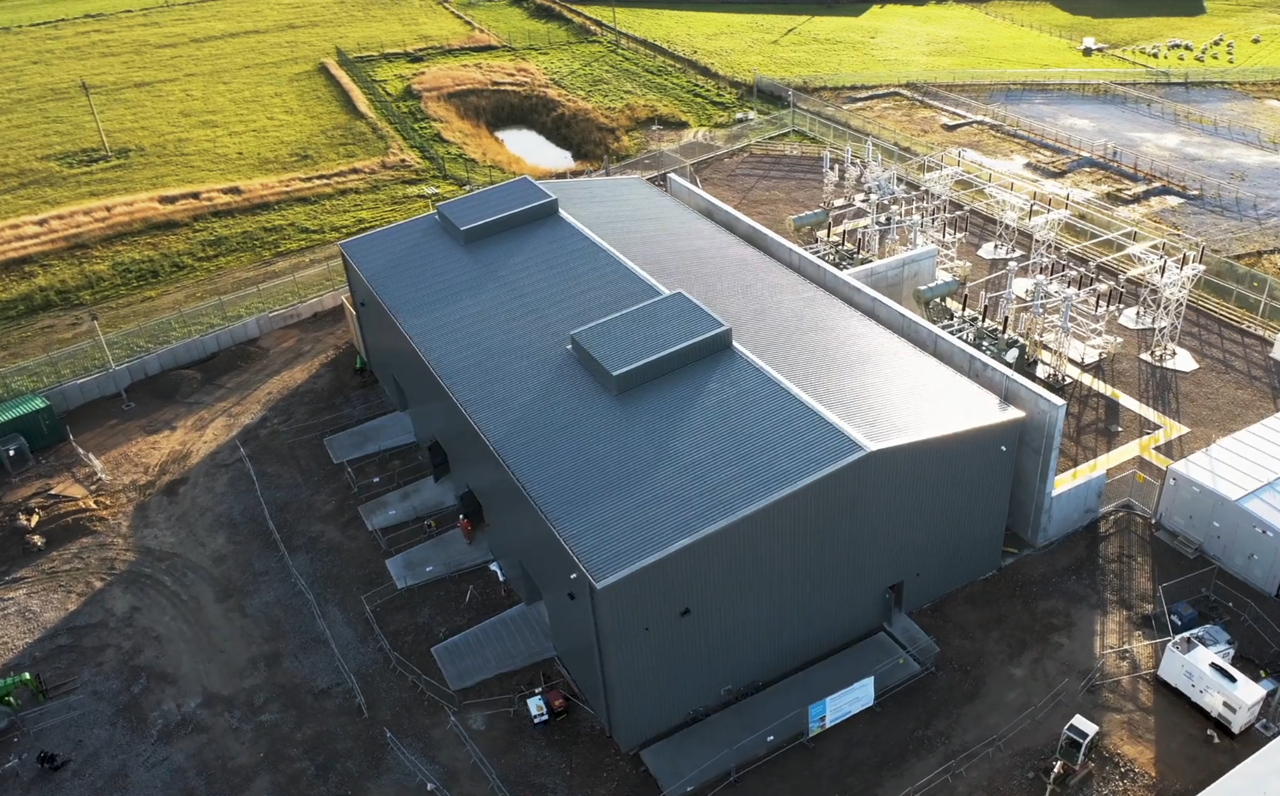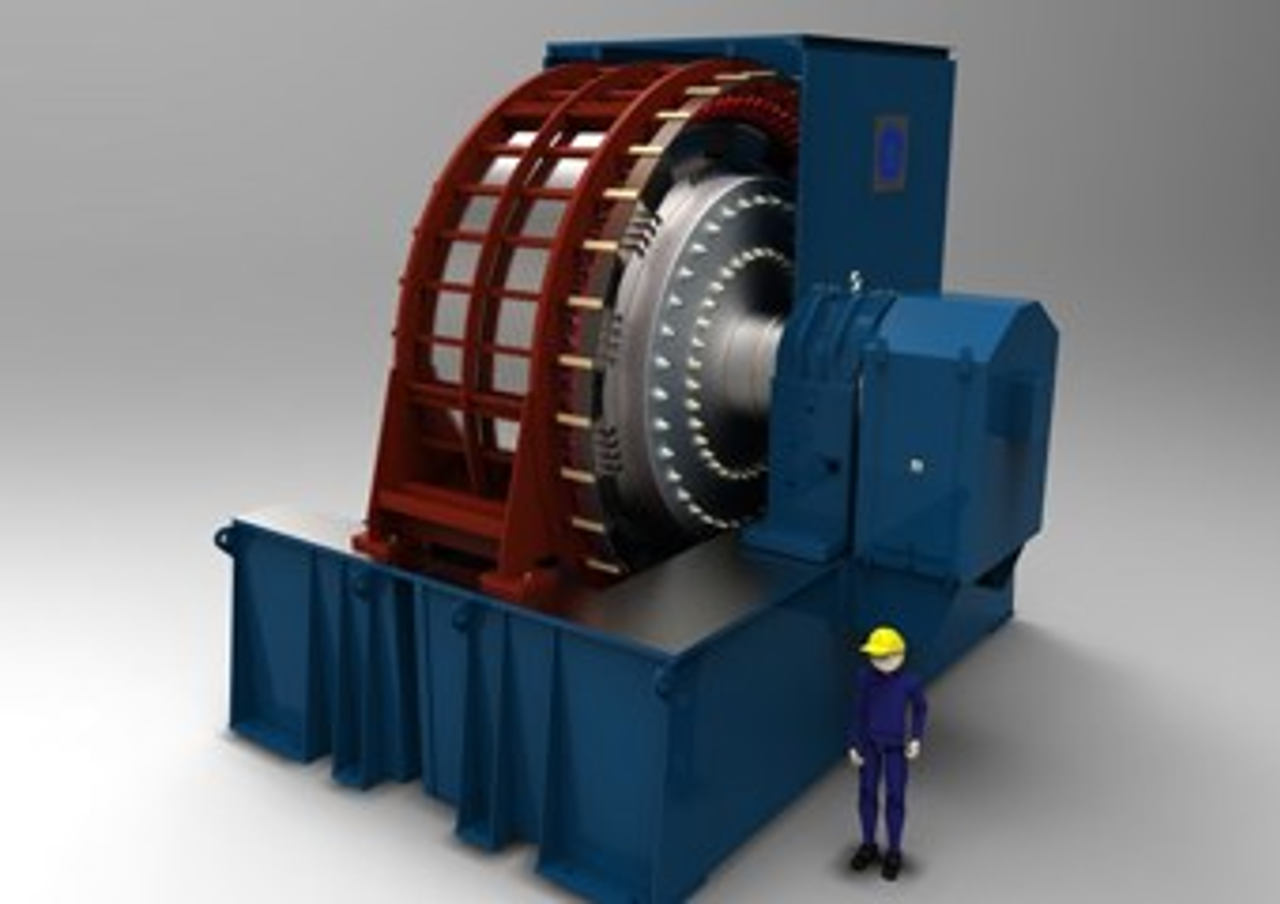
Keith Park Grid Stability Building
Grid Stability
Rotating Stabilisers Explained
Grid Stability
Statkraft are market leaders in delivering innovative projects that ensure the reliability of our electricity supply. We explain why grid stability and technologies like Rotating Stabilisers are crucial in the transition to a net zero electricity system and what role the company is playing.
Grid stability means maintaining the same frequency of electricity across the grid network, providing reliability of power supply in case of disruptions to the electricity system.
In traditional power plants based on coal, gas or hydropower, kinetic energy from turbines is converted into electric power using generators. The large turbines have so much inherent inertia, and store so much kinetic energy, that they provide enough response time to cope with sudden interruptions in the power supply. This is similar to a bicycle that continues to roll long after the cyclist has stopped pedalling. Maintaining stability in the GB grid has become a bigger challenge as we get more and more of our energy from wind and solar power plants. Renewable energy reduces the impact of climate change and is essential to achieving the Ireland's zero-carbon goals. Without stability services projects, like those delivered by Statkraft, renewable power plants do not have the inherent inertia needed to give time to respond to rapid changes in system frequency. In times of power interruption, such as when a generator fails or a power line is cut, frequency deviations can have major implications for grid stability – and in the worst case, can cause a blackout.
Harmful emissions
Different countries have different types of technologies for producing electricity and ensuring a stable power supply. Norway, which gets almost all its electricity from hydropower, generally has no problem with inertia and frequency drops. Other countries, such as France, have a lot of nuclear power, where large steam turbines provide stabilising kinetic energy to the grid.
Most other countries – including Ireland– do not have access to large amounts of hydropower or nuclear power and until now needed to operate coal or gas-fired power plants to ensure a steady frequency in the power grid. In practice this means that, on an increasingly regular basis, these power plants are run only to stabilise the grid, even though there is more than enough power from solar and wind to cover electricity needs.
The result is that we often don’t get to utilise all of the renewable generation we have. The system operators are forced to run gas or coal power plants and turn off wind turbines that could supply electricity.
Rotating stabilisers
This is where the rotating stabiliser, or synchronous compensator, comes in. These machines are designed to deliver the inertia needed to stabilise the grid and thus eliminate the need to run fossil-fired power plants. With the help of flywheels, the stabilisers can "store" kinetic energy in the same way as turbines.

Rotating Stabiliser